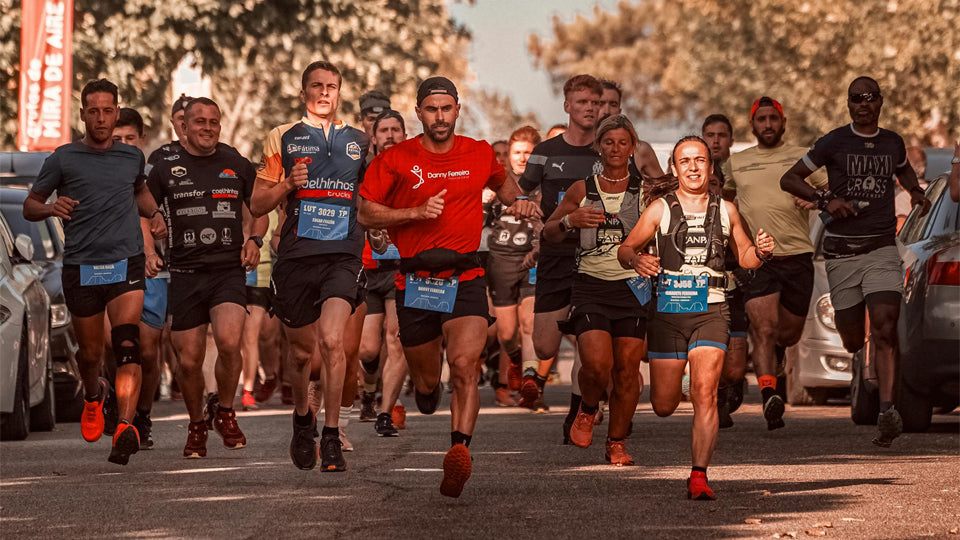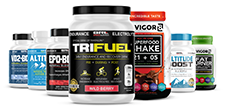How to Improve Your VO2 Max — Naturally

VO2 max is one of the gold standards of cardiovascular fitness. It’s right up there alongside lactic threshold when it comes to determining your exercise performance.
In light of that, what’s the best way to improve your VO2 max? It might not be what you think. In this article we’ll be exploring how to improve your VO2 max naturally — including how to eat, how to train, and much more.
- What is VO2 max?
- VO2 max: what should endurance athletes shoot for?
- The best workouts to improve your VO2 max (they’re not what you think)
- How to boost your VO2 max with HIIT (high-intensity interval training)
- How natural herbs and adaptogens could supercharge your VO2 max
What is VO2 max?
First things first: what is VO2 max, even?
In super simple terms, it’s a measurement that refers to the maximum amount of oxygen your body can process and use during intense exercise.
In more complex terms, refers to the volume (V) of oxygen (O2) utilized during maximum aerobic exertion (max), normally measured per kilogram of body weight.
VO2 max sometimes goes by other names, too, including:
- Maximal oxygen consumption
- Maximal oxygen uptake
- Maximal aerobic capacity
Your VO2 max typically occurs at an intensity you can hold for between 3-8 minutes. (Shorter intervals become anaerobic, while longer ones don’t quite max out oxygen transport.) VO2 max can also be approximated as a percentage of your max heart rate, but this percentage can vary wildly depending on your aerobic fitness.
VO2 max: what should endurance athletes shoot for?
As you might expect, elite athletes generally have high VO2 maxes — particularly if they specialize in endurance sports. What type of numbers should you shoot for? Here are some figures that can serve as a general guide:
VO2 max ranges: beginners
The average healthy, untrained person has a V̇O2 max of roughly 27-40 mL/kg/min. Females tend to average between 27 and the low 30s, while males tend to average in the upper 30s.
These scores vary with age, and can be improved quickly with dedicated training. Different people have different ‘trainability’ levels, too. Some people respond quickly to training . . . others not so much. [1]
VO2 max ranges: athletes
Athletes typically have VO2 maxes above 50 mL/kg/min. VO2 max can improve quickly in response to targeted training (but more on that a little later). Endurance athletes have even higher VO2 maxes — they tend to average 55+ mL/kg/min.
VO2 max ranges: elite athletes
Here’s where things get interesting. While the idea that the most elite athletes have the most elite VO2 maxes is intuitive enough, the types of athletes with the very highest scores might surprise you.
It turns out that endurance sports that engage more muscle groups boost VO2 max more than sports that engage fewer groups. (This begins to make a little more sense when you consider that VO2 max is a full body measurement based on your body weight.)
- Elite runners: up to 85 mL/kg·min
- Elite cyclists: up to 92 mL/kg·min
- Elite XC skiers: up to 96 mL/kg·min
Elite rowers and other full-body endurance athletes also have astronomical VO2 maxes, but their added muscle mass ‘dilutes’ their per kilogram scores compared to the lighter athletes listed above. And as impressive as these numbers are, thoroughbred horses and Alaskan huskies have registered VO2 maxes as high as 240 mL/kg·min! [2]
The best workouts to improve your VO2 max
You may not be an elite athlete, at least not yet . . . and that’s totally okay. The benefits of improving your VO2 max are virtually universal. Higher levels of cardiovascular fitness are correlated with:
- A longer lifespan
- Improved mood
- Increased work output
- Better-supported sleep
- Improved quality of life
How to boost your VO2 max with HIIT
Endurance training alone is enough to bring your VO2 max higher and higher over time. If you really want to optimize your VO2 max, though, you’ll want to spend a small amount of time above your lactate threshold.
How? By doing interval workouts that reach the very ‘edge’ of aerobic exercise. Here’s how they’re done.
- Start your workout normally with a thorough warmup
- Spend a little bit of time in zone 2 (endurance training/cardio)
- Spend a little bit of time in zone 4 (approaching your lactate threshold)
- Spend a few minutes in zone 1 to bring your heart rate back down (you’re about to begin your first interval)
- Spend 3 minutes in zone 5 — see if you can keep up a pace you could hold for 5 minutes max!
- Rest for 3 minutes, going as slowly as you need to recover
- Repeat steps 5 and 6 for three-five more reps
- Spend a little bit of time in zone 2 to ‘fill out’ the rest of your workout
- Begin a thorough cooldown
Simply adding one of these HIIT workouts into your weekly training routine could be enough to optimize your VO2 max (Already-elite athletes may be able to handle two).
Another type of training that may improve your VO2 max? Cross-training. Trying out any of the full-body endurance sports we mentioned earlier might help target your VO2 max from a different angle. If you’re blessed to live in a snowy climate, try cross-country skiing; if not, hit up the gym and do a few intervals on the rowing machine. And if you’re feeling extra adventurous you could even try “heavy hands” — a full-body exercise created by Dr. Leonard Schwartz with VO2 max in mind. [3]
How natural herbs and adaptogens could supercharge your VO2 max
As great as interval training is, it’s only half the equation. Your intake (food, hydration, supplements, etc.) is nearly as important as your output when it comes to fitness levels! Recent advancements in sports medicine have helped us identify several key adaptogens that boost VO2 max quickly and efficiently:
- Cordyceps
- Echinacea
- Beta-alanine
All these nutrients and more are present in VO2-Boost — the efficacy of its BodyEndurance™ complex has been cited in more than 5,500 scientific studies. Combined with B vitamins to support glycogen levels and metabolic health, VO2-Boost is a recipe for higher cardiovascular fitness and overall health.
Take it from people who’ve tried it: VO2 boost can improve your VO2 max fast — like really fast. Here’s what triathlete John says:
“I'm the biggest skeptic. I'm usually weary about supplements. BUT THIS STUFF WORKS. I take the VO2-Boost and EPO-Boost together. My training was kicked up a notch or two. I'm 33 and just getting into Marathons and Triathlons the last few years. These products really do produce results. Take it everyday as the bottle says and you'll see results in 2 to 3 weeks. BUY IT . . . Seriously.”
Author: Thomas Wrona
Date: 3/26/2024
Sources
- Williams, C. J., Williams, M. G., Eynon, N., Ashton, K. J., Little, J. P., Wisloff, U., & Coombes, J. S. (2017). Genes to predict VO2max trainability: A systematic review. BMC Genomics, 18(Suppl 8).
https://doi.org/10.1186/s12864-017-4192-6 - Wayback Machine. 2009.
https://web.archive.org/web/20101101175737/http://www.bbc.co.uk/blogs/martingough/2009/06/monsters_wanted.html - The Art of Manliness. 2022.
https://www.artofmanliness.com/health-fitness/fitness/heavyhands-walking-workout/
Take the next step in your training regimen: Try any BRL Sports supplement risk-free! If our natural nutritional products aren’t the best you’ve ever used, simply return your purchase for a 100% refund — no questions asked!
Also in Fitness

The Qualification Process for the 2025 Boston Marathon
If you’re trying to qualify for the 2025 Boston Marathon or thinking about racing it one day, pay attention to these key steps and you’ll be toeing thestart line on April 21, 2025 or later!

Get the Most Bang for Your Buck With Sweet Spot Training



